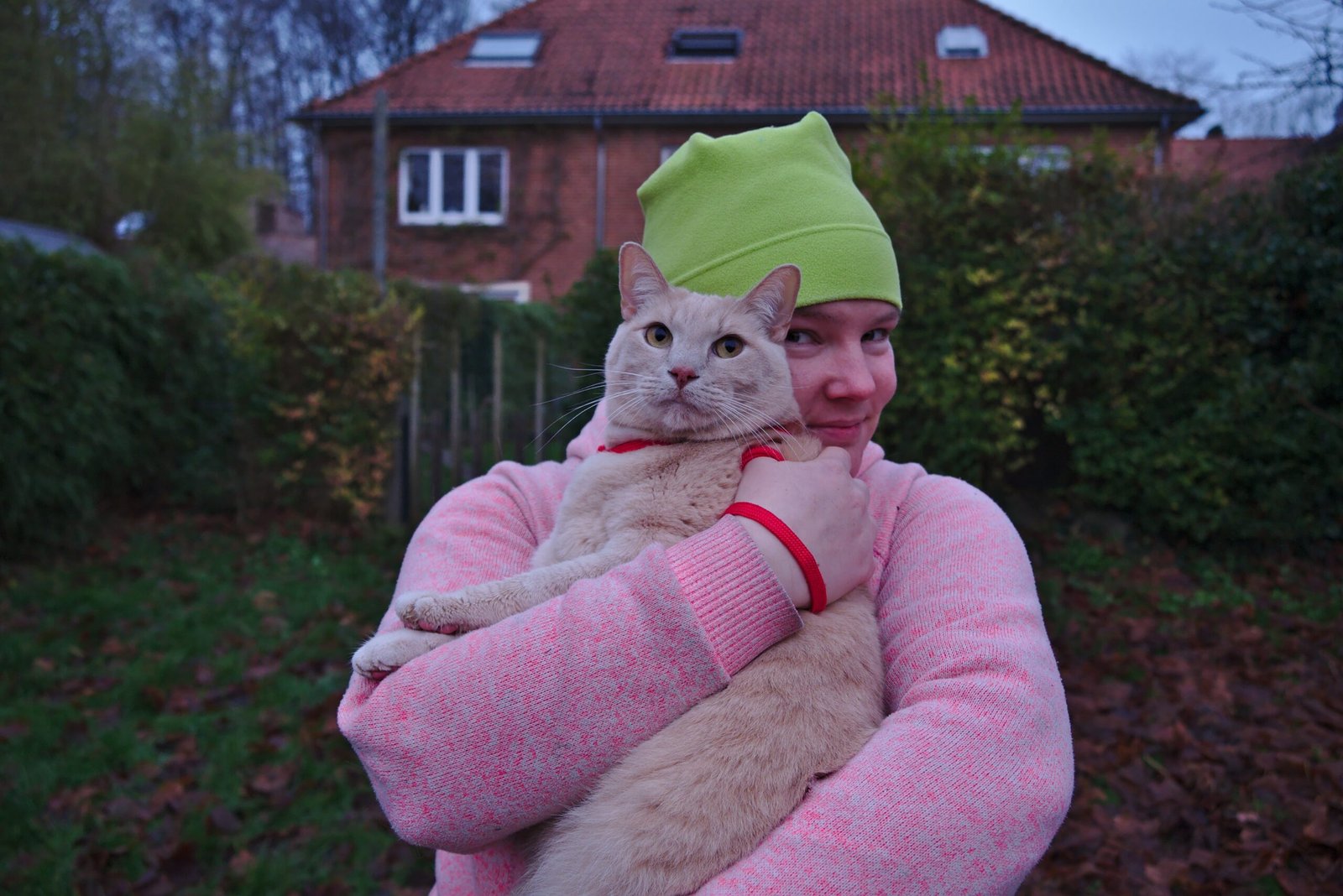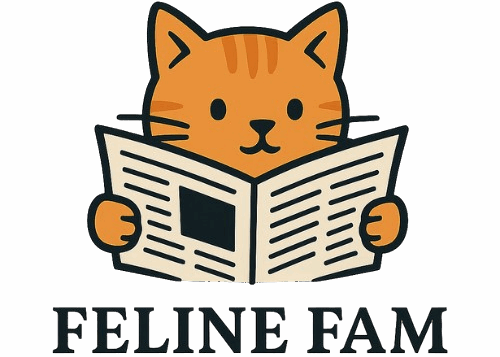Have you ever wondered why your cat seems to ignore your cuddles, but never misses a morning ritual of sitting by your feet or meowing for food at exactly the same time? For many cat lovers, this can be both mystifying and a little heartbreaking. Are cats simply cold? Or is there something deeper and more mysterious about how they show love? The truth might surprise you. Some cats express their affection not with purrs and laps, but through ritualistic behaviors that are as meaningful as a warm snuggle. Let’s dive into the fascinating world of feline love languages—where routine, not always touch, is the purest sign of devotion.
The Mysterious Nature of Cat Affection

Cats have always been creatures of mystery. Unlike dogs, whose affection is bold and boisterous, cats can seem aloof or even indifferent. But behind this veil of coolness lies a different story—one where ritual, not physical closeness, is the main way some cats show they care. This can be confusing for people expecting overt displays of love. However, for cats, subtlety is key. Their world is one of quiet gestures, patterns, and repetition. These rituals aren’t random; they’re carefully chosen acts that only the most attentive owners will notice. Understanding this can open up a whole new way of connecting with your feline friend.
Rituals vs. Traditional Affection

When people think of a loving pet, they often imagine warm cuddles and sloppy kisses. Cats, however, play by different rules. Many express their bonding through routines—like always greeting you at the door, following you into the bathroom, or sleeping at the foot of your bed. These actions may seem mundane, but for a cat, they’re powerful signs of trust and loyalty. While some cats enjoy being petted or held, others prefer the comfortable predictability of ritual. This is their way of saying, “I love you,” without words or overt affection. Once you spot these patterns, you might realize your cat is far more loving than you ever thought.
The Science Behind Feline Rituals

Recent research has shown that cats are creatures of habit, finding comfort in predictable routines. Their brains are wired to recognize and repeat actions that bring safety and satisfaction. When a cat engages in a ritual—like rubbing against your legs every morning—it’s not just seeking food or attention. It’s reinforcing a bond, marking you as part of its territory, and expressing contentment with the relationship. These rituals release feel-good hormones in both cats and their humans, even if the connection isn’t as obvious as a cuddle. Scientists believe this behavior is rooted in survival instincts, where routine equals safety.
Early Socialization and Its Impact

A cat’s upbringing has a huge impact on how it expresses love. Kittens who are handled gently and frequently by humans often grow up to be more physically affectionate. Those who miss out on early socialization, especially before 8 weeks of age, may be more reserved. But instead of shutting down, these cats often develop unique rituals as a way to bridge the gap. They might bring you a favorite toy, perform a nightly “goodnight” routine, or insist on eating only when you’re present. These actions speak volumes about their trust in you, even if they’re not big on hugs.
Independence as a Core Cat Trait

Cats are famously independent. Unlike pack animals, they naturally keep to themselves, only socializing on their own terms. This independence doesn’t mean they’re cold-hearted; it just means their way of relating is different. Rituals allow cats to connect without sacrificing their need for space. By sticking to familiar routines, they maintain a sense of control while still showing loyalty and affection. For many cats, ritualistic behavior is a compromise—showing love without feeling overwhelmed by closeness. It’s their way of saying, “I care about you, but I also value my freedom.”
Common Rituals That Signal Love

If you watch closely, you’ll notice your cat has rituals just for you. Maybe it’s a daily game of chase around the kitchen at noon, or a habit of sitting by your bathroom sink every morning. Some cats bring small “gifts” like socks or toys as part of their ritual. Others might insist on watching you eat or greet you with a specific meow when you come home. These acts might seem quirky, but they’re actually deep expressions of attachment. Each ritual is a little love note, written in the secret language of cats.
Understanding the “Invisible” Cat Cuddle

Not all love is physical. Some cats express affection by simply being in the same room as you, even if they don’t touch. This quiet presence is a form of ritual too. Many cats will follow their owners from room to room, keeping a watchful eye while maintaining a comfortable distance. It’s their way of saying, “I want to be near you, even if I don’t want to be on you.” This invisible cuddle can be easy to overlook, but it’s a quiet testament to the bond you share.
Why Some Cats Shy Away from Affection

There are lots of reasons why a cat might prefer ritual over physical affection. Past trauma, lack of early socialization, or just a naturally reserved personality can all play a part. Some breeds are more independent by nature. For these cats, physical closeness can feel threatening or overwhelming. Rituals offer a safe alternative—a way to participate in the relationship without crossing personal boundaries. By respecting these limits, owners can help their cats feel secure and loved.
The Role of Scent in Feline Rituals

Scent is everything to a cat. When your cat rubs its face on your hand or your favorite chair, it’s leaving behind pheromones—a silent but powerful part of its ritual. This behavior marks you as “theirs” and reinforces the bond between you. Cats also use scent to create familiarity and comfort in their environment. By repeating the same scent-based rituals day after day, they’re constantly reaffirming their connection to you and their home.
Food Rituals: More Than Just Hunger

Does your cat demand breakfast at the crack of dawn, or insist you stand nearby while it eats? These food-related rituals are about much more than filling a belly. In the wild, sharing a meal is a sign of trust and community. Domestic cats echo this with their own routines—waiting for you to pour the kibble, meowing at precise times, or even refusing to eat unless you’re present. These behaviors are subtle declarations of love, woven into the fabric of daily life.
Playtime as a Love Language

Some cats show affection through play. They might bring you their favorite toy, initiate a game of hide-and-seek, or invent elaborate rituals around playtime. These actions aren’t just for entertainment—they’re a way for your cat to share something special with you. Play strengthens the bond between cat and owner, reinforcing trust and affection in a way that feels safe and fun. For cats who don’t like cuddling, play can be their most heartfelt expression of love.
The Security of Predictable Routines

Cats thrive on predictability. Routine gives them a sense of safety and control in a world that can otherwise feel unpredictable. When a cat sticks to a ritual with you—whether it’s morning greetings, evening wind-downs, or scheduled play sessions—it’s a sign that your presence is a comforting constant. This reliability is a powerful form of connection. For some cats, the comfort of shared routines is even more meaningful than a snuggle.
Interpreting the “Cold” Cat

It’s easy to misread a ritual-loving cat as cold or uncaring, but nothing could be further from the truth. Just as some people are shy with hugs but generous with their time, cats can express love in ways that aren’t immediately obvious. The key is learning to read their signals and appreciate the rituals for what they are—genuine expressions of loyalty and trust. Once you see your cat’s routines as a love language, the “cold” exterior melts away.
How to Respond to Ritual-Based Love

If your cat is more ritualistic than cuddly, lean into their habits. Participate in their routines, whether it’s letting them join you in the bathroom or respecting their need to sit nearby without being touched. You can even create new rituals together—like a daily brushing session, or a special treat at bedtime. These shared moments deepen your relationship and show your cat that you understand and respect their unique way of loving.
Adjusting Expectations as a Cat Owner

It’s natural to want a lap cat, but not all cats are wired that way. Adjusting your expectations can help you build a more rewarding bond. Instead of focusing on what your cat won’t do, celebrate the rituals they share with you. Notice the little things: the way they always greet you at the door, or insist on their spot on the couch. By appreciating these moments, you’ll find more joy in your relationship and help your cat feel truly understood.
The Importance of Respecting Boundaries

Respect is at the heart of every good relationship, and this is especially true with cats. Pushing for physical affection when your cat isn’t comfortable can damage trust. Instead, honor their rituals and personal space. Let them come to you on their own terms. When you respect their boundaries, you give your cat the freedom to express love in the way that feels safest to them. Over time, this can even lead to more physical affection, as trust grows.
When Rituals Change: What It Means

A sudden change in your cat’s rituals can be a sign that something’s off. If your cat stops greeting you at the door or skips a favorite routine, pay attention. This could indicate stress, illness, or a shift in the relationship. Cats are creatures of habit, so any disruption to their rituals should be taken seriously. Getting to know your cat’s patterns makes it easier to spot problems early and offer the support they need.
Rituals Across Different Cat Breeds

Not all cats are the same, and breed can play a big role in how rituals are expressed. Siamese cats, for example, are known for their vocal routines, while Maine Coons might have elaborate grooming rituals. Some breeds are naturally more independent, preferring ritual over snuggles. Others are more likely to mix ritual with physical affection. Understanding your cat’s breed can help you decode their unique love language and appreciate the quirks that make them special.
How Rituals Strengthen the Human-Cat Bond

Over time, shared rituals become the glue that holds the human-cat relationship together. These routines create a sense of belonging and mutual understanding. When you participate in your cat’s rituals, you’re sending a clear message: “I see you, I understand you, and I care.” This deepens trust and can make even the most independent cat feel safe and loved. The beauty of ritual-based love is that it grows stronger with each shared moment, creating a bond that’s unique and lasting.

Growing up traveling and experiencing new cultures and wonders, I have had a passion for nature, adventuring, photography, and videography. I am currently working towards a BSc in Biodiversity and Ecology at Stellenbosch University, and I hope to specialise in Marine Sciences one day.
Please send any feedback to Feedback@animalsaroundtheglobe.com






